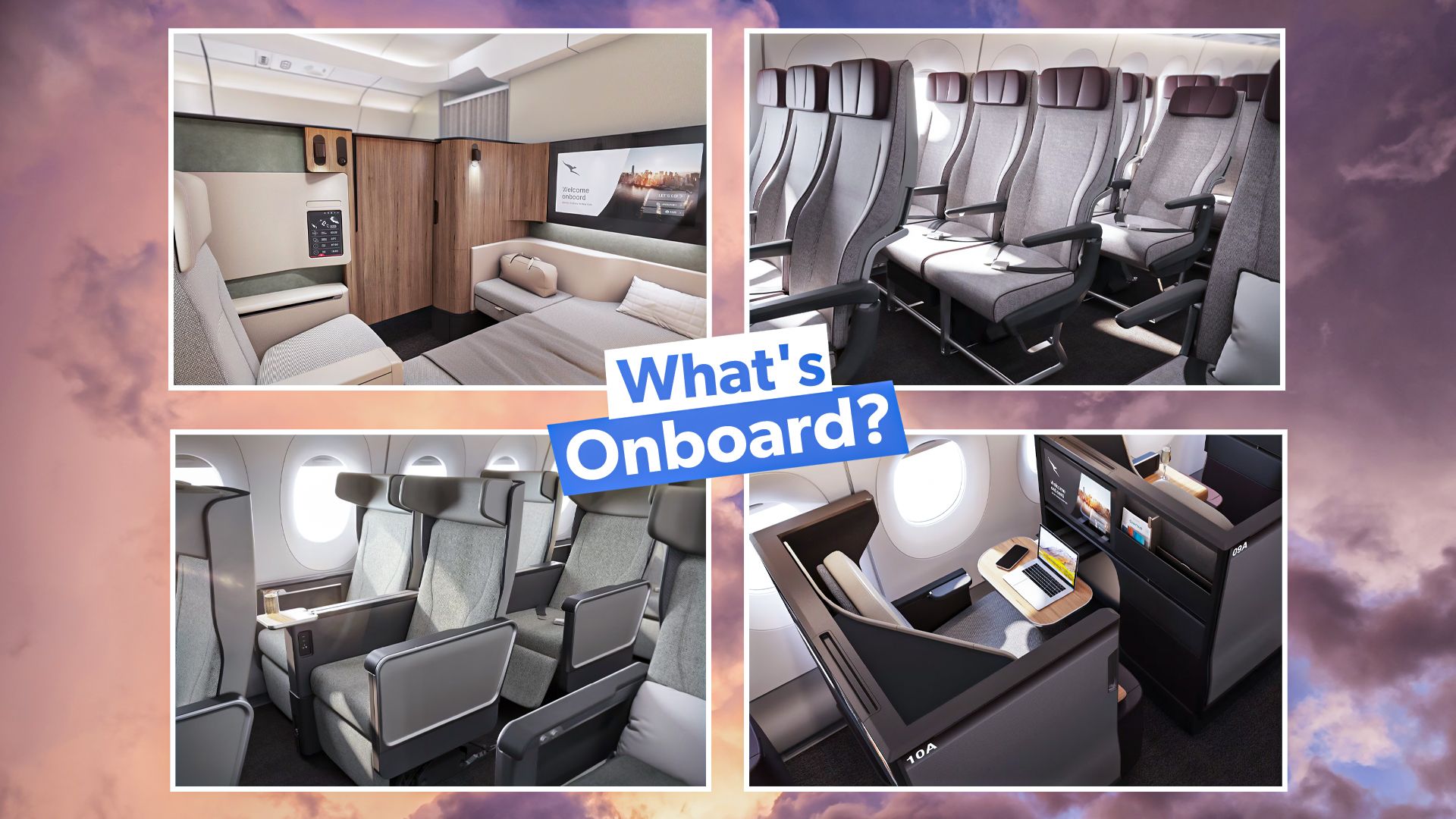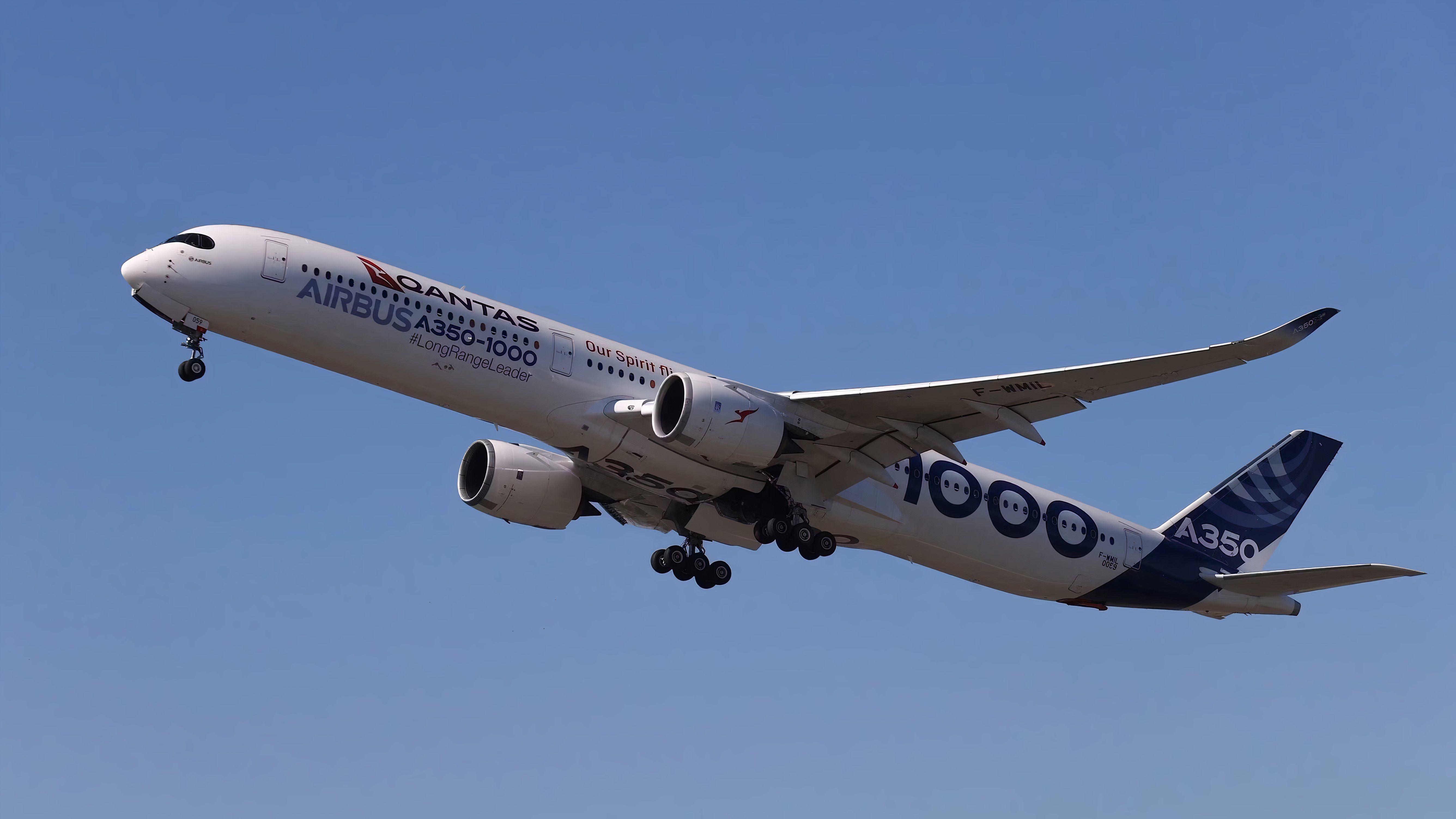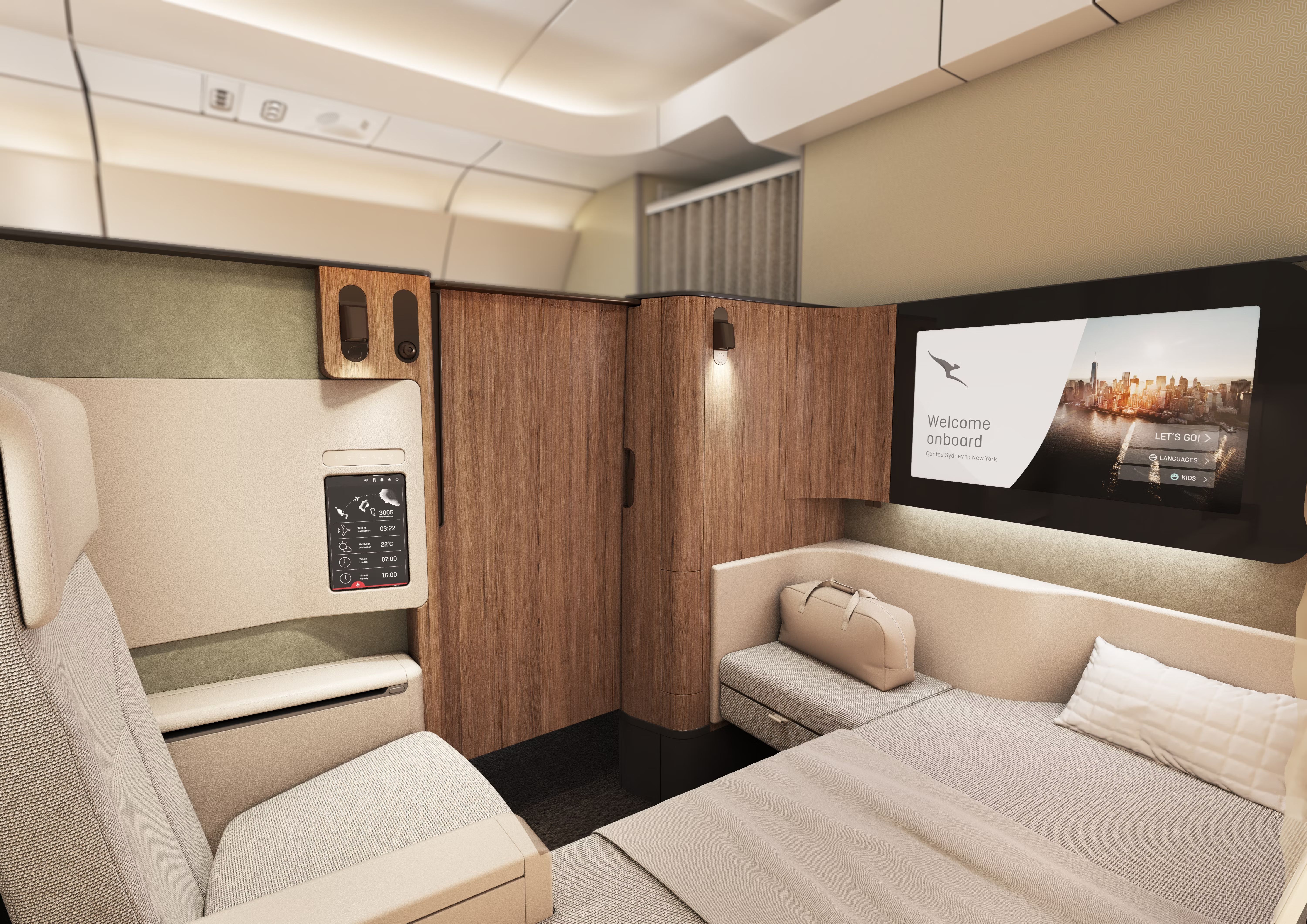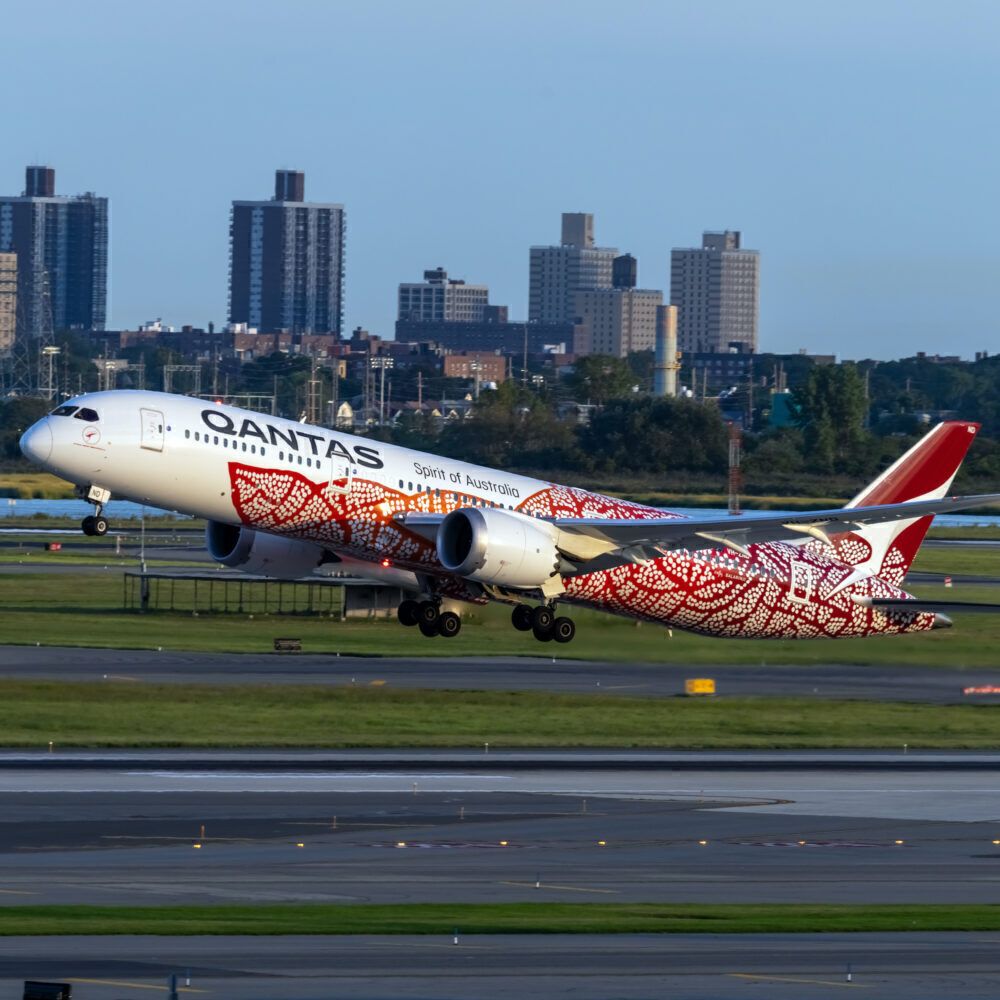Summary
- Qantas is set to launch ultra-long-haul nonstop flights between Sydney, London, and New York using Airbus A350s.
- A four-cabin configuration revealed: 140 economy seats, 40 premium economy seats, 52 business-class suites, and 6 first-class pods.
- Unique wellness spaces set to be included on the Airbus A350 will offer passengers the opportunity to exercise during flight.
Australian flag carrier Qantas might just be embarking on the most ambitious initiative in the history of commercial aviation, attempting to connect cities on opposite sides of the globe with nonstop flights. According to an analysis from CNN, services between London, New York, and Sydney are set to launch next year, with nonstop flights between Sydney Kingsford Smith Airport (SYD) and London Heathrow (LHR).
These flights will be unlike any others to ever take to the skies. They will take over 19 hours to traverse nearly half of the Earth’s circumference, which is only possible due to the impressive range of the Airbus A350s that the carrier will deploy on these routes. As such an incredibly long service, the airline will have to carefully consider how it will configure its cabins and will need to emphasize passenger comfort.
Photo: Airbus
As a result, Qantas has put a tremendous amount of effort into designing the interior configurations of its A350 jets and has made some choices that will certainly raise an eyebrow. Ultra-long-haul flights are challenging to make profitable, and a key component of an airline’s potential for profitability is how it arranges its cabins. In this article, we will explore Qantas’ Project Sunrise A350s and what passengers will expect on these unbelievably long flights.
Four classes of service
While many speculated that the carrier would likely not choose to offer an economy class cabin on these routes, the carrier’s June 2023 announcement of the A350’s cabin configuration indicated that a four-cabin configuration would be selected. Details of this are as follows:
- 140 economy class seats
- 40 premium economy seats
- 52 business class semi-private suites
- 6 fully-enclosed first class pods
The economy and premium economy class seats will follow a fairly standard layout, with economy arranged in a 3-4-3 configuration and premium economy in a 2-3-2 configuration. These cabins will feature all the typical bells and whistles of modern airliner seats, including large seatback entertainment screens and USB-C power outlets. Given the emphasis on passenger comfort, it is unsurprising that the airline has also designed these seats with the most legroom for economy and premium economy within their fleets.
The business class cabin will feature semi-private pods, all equipped with flat bed seating, and will improve on other long-haul business class seats in the airline’s fleet. In first class, the airline’s six fully enclosed suites will be the nicest inflight products available in Qantas’ fleet, with two-meter-long beds and separate recliner seats.
Attempting to fit four cabins of service onto an aircraft the size of an Airbus A350 is an interesting choice in and of itself. For starters, airlines often choose against these configurations as they introduce large “gaps” or spaces between the cabins, reducing the available floor space for revenue passenger seating. As a result, relatively few airlines operate A350s with such a four-class configuration, and only a handful do so with the Boeing 777.
But Qantas has a special plan for these spaces between the separate cabins. Specifically, the carrier intends to include first-of-their-kind wellness spaces, which will offer passengers the opportunity to exercise and move out of their seats during the lengthy journeys, according to Airways Magazine.
Photo: Qantas
One of these facilities will be between the first and business class cabins, while the other will be between economy and premium economy. Some have questioned the utility of including onboard gyms without showers, but passengers will likely still enjoy the opportunity to relax.
Lessons from the past
Ultra-long-haul flights are unique in nature and often push the limits of what airlines can do. These kinds of services are challenging from a technological standpoint and will require airlines to perform extensive planning to maintain safe operations.
However, ultra-long-haul flights also push the limits of airline operating economics for a few key reasons. For starters, aircraft become less efficient over longer distances as the weight of the increased fuel carried begins to require more fuel consumed per passenger per mile.
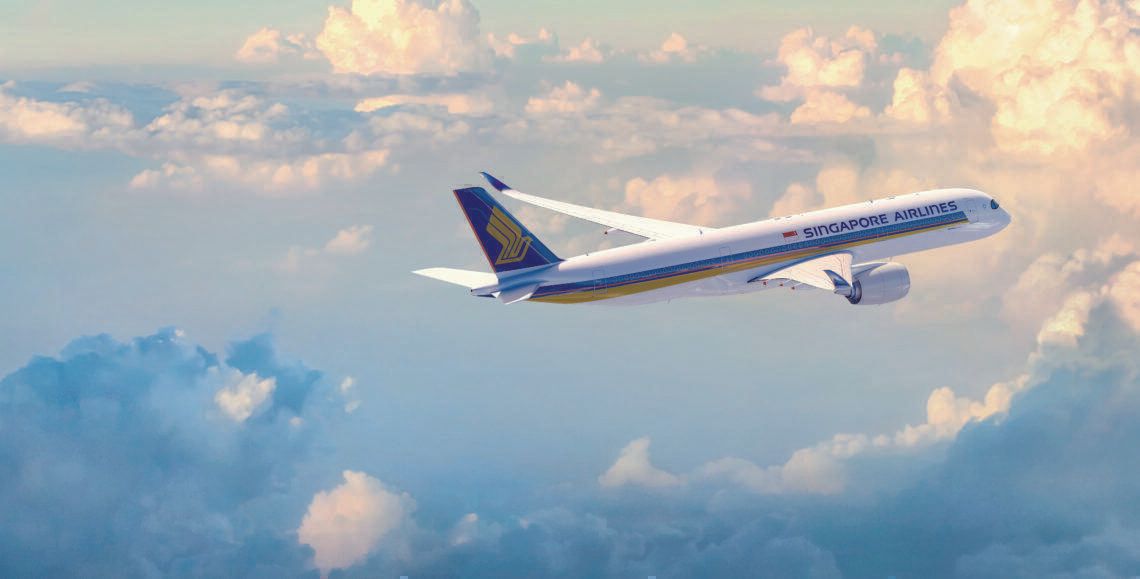
Related
Singapore Airlines A350ULR Flight From Singapore to New York Takes Flight
As a result, airlines, which already operate on extremely thin margins, are pushed into even more challenging financial circumstances regarding these routes. Thus, airlines that have pushed the limits of long-haul travel have been forced to carefully consider how they configure their cabins.
The world’s longest ultra-long-haul commercial flight has been Singapore Airlines’ service from Singapore Changi Airport (SIN) to New York’s John F. Kennedy International Airport (JFK) for years. This flight is operated by an Airbus A350-900ULR, a model exclusively operated by the airline for these services.
Singapore first began nonstop ultra-long-haul service with the Airbus A340-500 in 2008, equipping their jets with a 100-seat all-business class configuration, according to Travel Weekly. Today, the airline operates a 161-seat configuration featuring 67 business class seats and a 94-seat premium economy cabin.
Singapore Airlines has found success operating ultra-long-haul flights by focusing on premium passengers, a strategy that Qantas is modifying. The introduction of an economy class on Project Sunrise flights is interesting, as it demonstrates the airline’s belief that it can sell such tickets at a price that would allow it to profit.
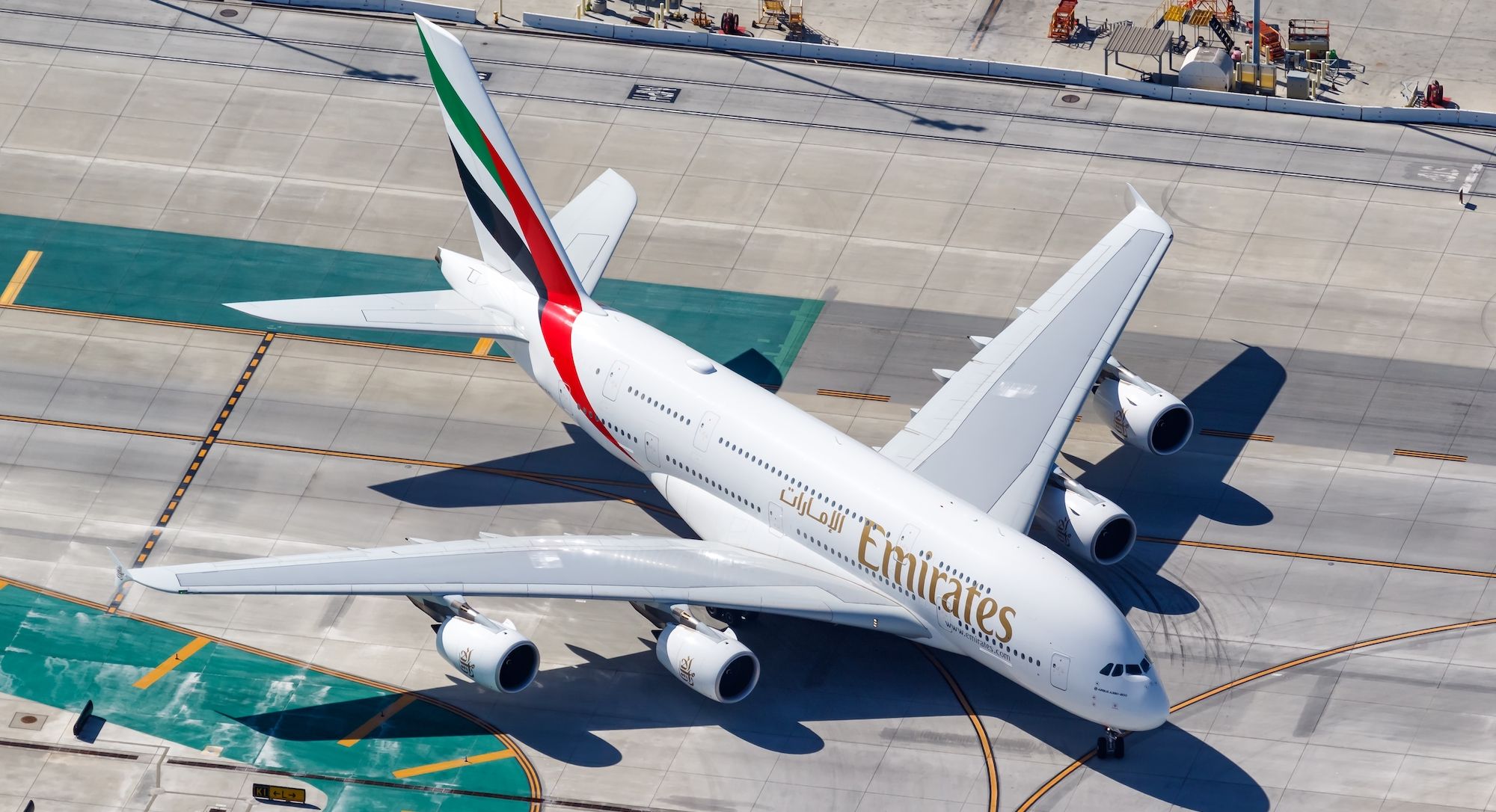
Related
Globe-spanning: Emirates Longest Flights For August 2023
Serving all six inhabited continents, Emirates excels in the long-haul travel experience.
The Airbus A350-1000 that Qantas will use is larger than Singapore’s A350-900ULR, allowing them more room to experiment with different cabin configurations. It is also important to note that the markets between Singapore and New York and Sydney and New York have differences that are likely to affect the airline’s cabin configuration decisions.

